The past life and present life of the Brazilian red bourbon family, revealing the perfect base of Italian # 2 coffee match.
Professional coffee knowledge exchange more coffee bean information please follow the coffee workshop (Wechat official account cafe_style)
Brazil Red Bourbon
[country] Brazil Barsil
Red bourbon, Red Bourbon
[treatment] hand extraction, followed by half-sun treatment
[place of origin] South Minas
[altitude] 700m-1200m
[treatment method] half-sun exposure
[flavor] High sweetness, clean, supple, low acid value, tropical fruit aroma.
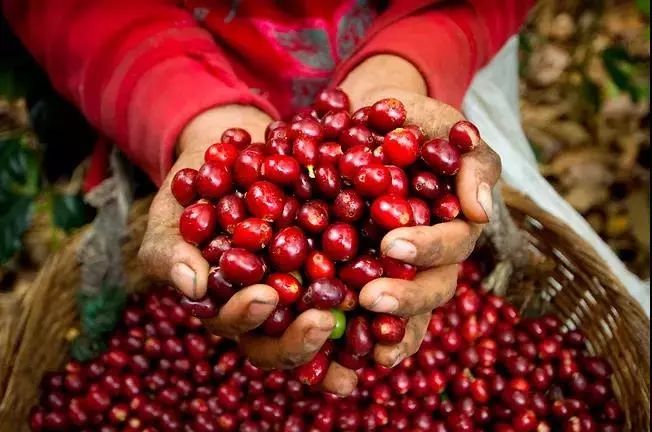
01 | Origin description
The hilly woodland where South Minas is 700m-1200m above sea level is the earliest production area of Brazilian coffee. Due to the increase in labor costs, it is now mostly harvested by machinery, and it is also the earliest commercialized area of coffee. We can see that many large exporters are also standing here. Bahia, located in the north of Brazil, mainly produces washing in Brazil, and Espiritu Santo, near the sea, is the main export area of Brazilian Robusta varieties.
There are mainly two kinds of topography in Brazil, one is the Brazilian plateau above 500 meters above sea level, and the other is the Brazilian plain below 200 meters above sea level. The main cultivated and well-known variety is bourbon (including yellow bourbon, red bourbon, Pingdou Shan du Shi). The taste of Brazilian coffee is mainly characterized by low acidity, nutty flavor, balanced and moderate thickness. In the world of boutique coffee, Brazilian coffee is not outstanding, but Brazilian coffee is often used as a blending variety in Italian coffee. Because of the high degree of balance, it is often used by merchants as blue mountain flavor beans.

Bourbon species
Tell me briefly what bourbon is. Bourbon coffee was originally grown on the island of Reunion, which was also known as le Bourbon before 1789. Bourbon, the second species caused by the Typica mutation, is the oldest coffee variety in existence, and the green fruit appears bright red when it is ripe.
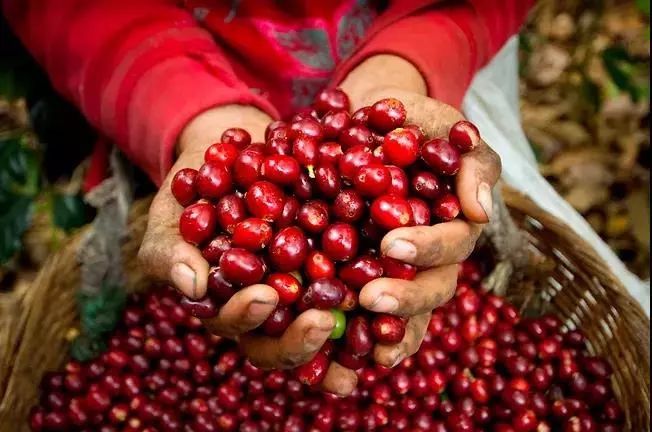
After the red bourbon general coffee tree blossoms and bears fruit, the color change of the coffee fruit is: green > turn yellowish > turn slightly orange > turn mature red > turn more ripe dark red, so some people also call it [red bourbon], in fact, red bourbon, that is, what we call bourbon species. Bourbon planted at high altitude usually has a better aroma, while the acid is brighter and even tastes like red wine.
Generally speaking, bourbon is a coffee tree that belongs to a branch of Arabica species, generally bearing red fruit, called red bourbon, in addition to yellow bourbon, orange bourbon, yellow bourbon relatively low yield, but better quality.

The propagation route of bourbon species
Introduced to Brazil in 1727 because of its low yield and easy to interfere with diseases, the bourbon species was introduced to Brazil around 1860 via Campinas in the south and rapidly expanded northward to other parts of South and Central America. In Latin America today, although most of the bourbon species have been basically replaced by their varieties (especially Caturra,Catuai and Mundo Novo, etc.), bourbon is still grown in El Salvador, Guatemala, Costa Rica, Peru and other countries.
In Africa, French missionaries known as Spiritan (from the Holy Spirit) played an important role in the spread of the bourbon species. The first church was founded in Reunion in 1841 and a branch was established in Zanzibar in 1859, while from Zanzibar a branch was established in Bagamoyo (Bagamoyo, coast of Tanzania, then known as Tanganyika) and St. Augustine (Kikuyu, Kenya) in 1862, and a branch was established in Bura (Taita Hills, Kenya) in 1893. The establishment of each chapter was accompanied by the planting of coffee seeds from Reunion.
Seedlings cultivated by Bura in 1899 were brought to another French church in Santa Cruz (near Nairobi), introduced to the Kilimanjaro region of Tanzania in 1900, and distributed seeds to local residents who were willing to grow coffee. This is the origin of the so-called "missionary bourbon". Then the Kent species was introduced in 1920. Therefore, up to now, the coffee in Tanzania is mainly bourbon and Kent.
-- French Territory Bourbon Island
-- pointed Bourbon to New Caledonia Yemen in 1860
-- 1732 round bourbon to the British dependency St. Helena Island.
-- round bourbon to Brazil in 1860.
-- round bourbon to Rwanda, Kenya, Tanzania in 1900
Sharp Bourbon to Colombia after 2000.
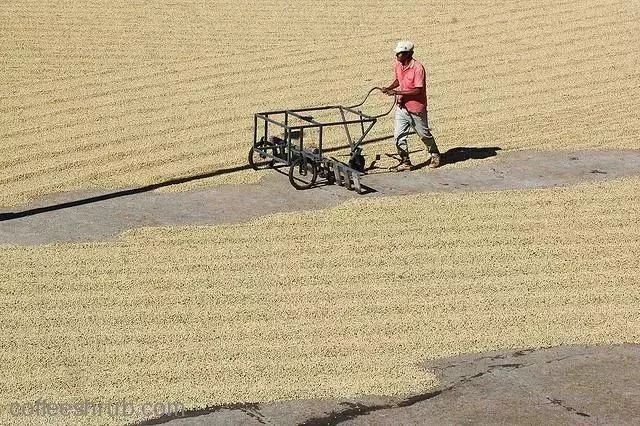
03 | introduction to the handling method
Peeling, tanning and honey treatment are the two treatments in the middle. In the 1990s, taking advantage of the unique dry climate, Brazil invented the peeling and tanning method (pulped natural), which requires less equipment and water resources than the traditional water washing method, and the quality is better than the traditional sun drying method. Brazil peel is usually sunburned in the sun.

02 | Analysis of raw beans
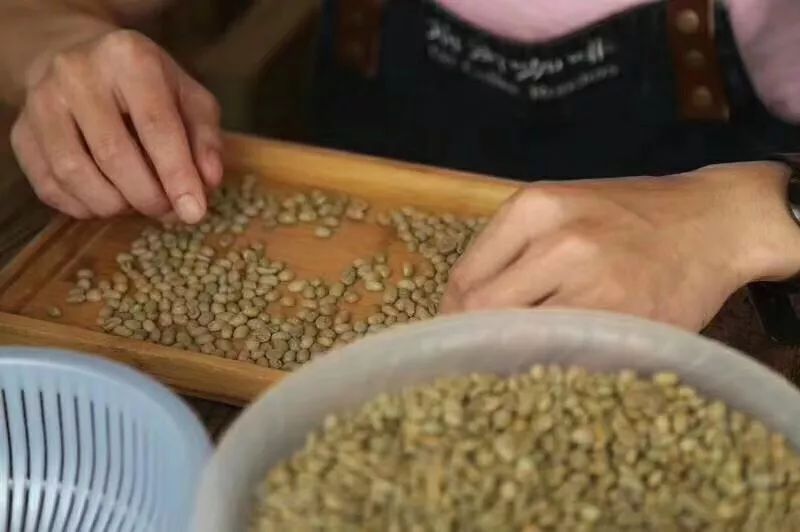
There are many kinds of coffee in Brazil, which are mainly treated by solarization, which are classified according to the name of the state of origin and the port of transport.
Due to the scattered origin and uneven quality, the classification standards are not unified:
The Brazilian grading system, which scores the proportion, size, flavor and taste of defects, is its own independent grading system, which is more complex than that from other countries. For example, "Brasil Santos, NY2 SC17/18 SS FC", NY2 classifies the proportion of defects: the higher the number, the greater the proportion of defects. The order is 2, 2, 3, 3, 3, 4... NY says it is based on the New York rating standard.

SC 17A 18 represents the number of coffee beans. While SS FC (Strictly Soft and Fine Cup) represents flavor and taste, it is divided into two groups: first Strictly Soft, Soft, Softish, Hard, Hardish, Rioy/Rioysh, Rio second is Fine Cup and Good cup. Brazilian coffee is widely loved because of its high sweetness, cleanliness, softness, low acid value and wide use.
04 | Baking analysis
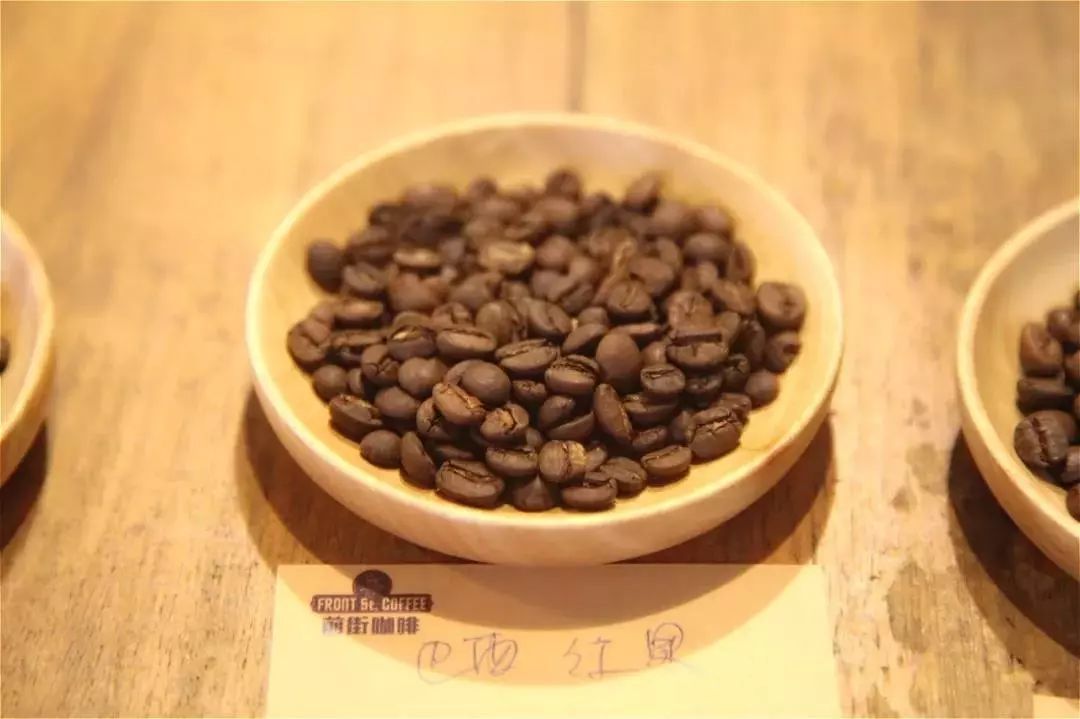
Brazilian coffee generally grows at an altitude of 1000-1300 meters above sea level, so its density is relatively low, the water content is moderate, the bean quality is soft, and the thickness from the bean surface to the bean core is thin, so it is not suitable for baking at too high temperature, so there will be a bitter taste. We choose the method of throwing beans over medium heat to keep the firepower to the dehydration stage, and fine-tune the caramelization reaction with the increase of temperature after the first explosion, which makes the caramelization reaction more fuller. After the semi-water washing and explosion, the temperature rises slowly, and the beans can be dropped when the second explosion is near.

Roaster Yangjia 600g semi-direct fire
The furnace temperature is preheated to 200 degrees Celsius, fire is fired after the throttle is set at 3J30s, the firepower is adjusted to 160, the throttle is unchanged, the temperature recovery point is 30, keep the firepower, the grass smell disappears, the firepower is reduced to 130, and the throttle is opened to 4. At 168 degrees, the firepower was reduced to 100 again.
After dehydration, the bean surface appears wrinkled and black markings, and the taste of toast changes to coffee, which is a prelude to an explosion. Listen to the sound of an explosion. At 8: 00, 39: 00, 50 starts to explode, and all the throttle doors are open. After an explosion, the development time is 3 minutes and 10 seconds, and when it reaches 190C, the firepower drops to 50194 degrees, then to 30 degrees, and then to about 200degrees.
This is a flavor-balanced coffee with a typical Brazilian coffee style. The flavor of nuts and chocolate is outstanding and the acidity is low.

06 | Cooking data
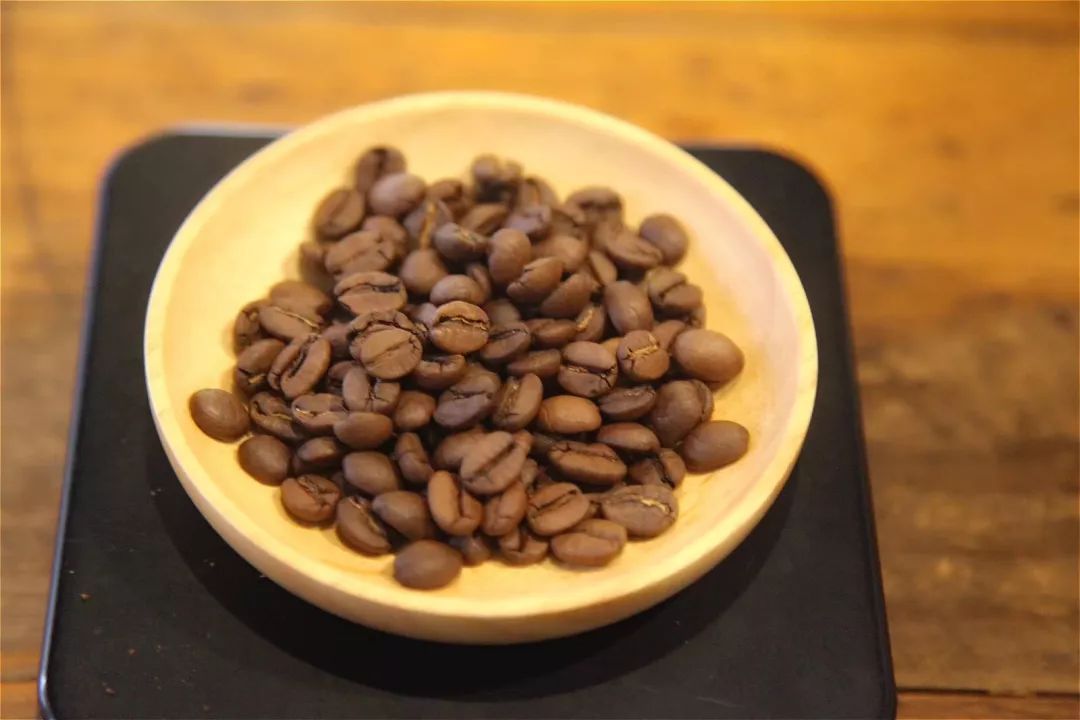
Recommended cooking method: hand flushing
Degree of grinding: 4 (Fuji R440)
Water temperature: 89 °C

V60 filter cup, 15g powder, water temperature 90-91 degrees, grinding 3.5.The ratio of water to powder is close to 1:15
Steaming in 30 grams of water for 30 seconds
Segment: water injection to 120ml cut off, slow water injection to 225ml
That is, 30-120-75, the total extraction time is 2 minutes.
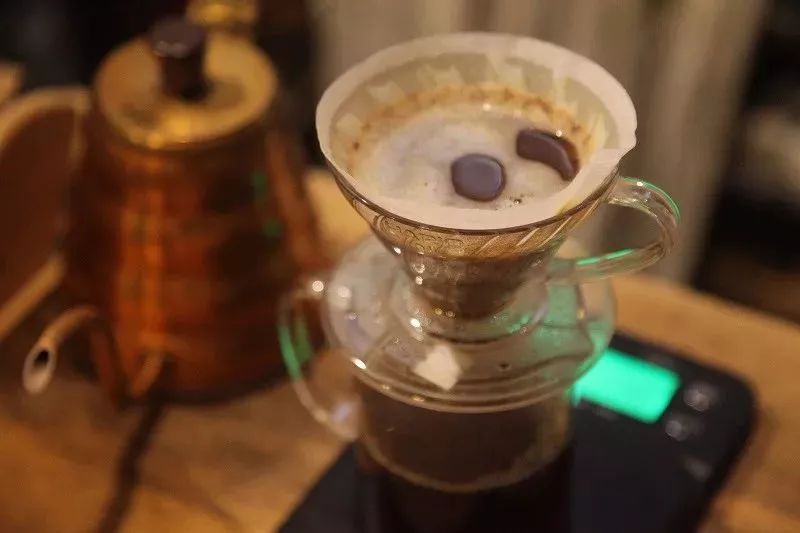
Other suggestions for trickling extraction:
Normal pressure, recommended grinding degree of 3.5-4 / water temperature 90 °C
Philharmonic pressure, recommended 2.5 grinding degree, water temperature 90 °C
[Italian # 2] Colombian and Brazilian blend has its own sweetness, some nuts, peach, almond flavor, caramel sweetness, chocolate silky, obvious sense of balance today. I tried 1.9 grind 21.5g powder extraction for the first time in a double-headed powder bowl. I found that there was too much powder and there was no liquid after 5 seconds. By reducing the amount of powder by 20.5g and keeping the grinding degree unchanged, I extracted 42g concentrate in a ratio of 1: 2 in 28 seconds.
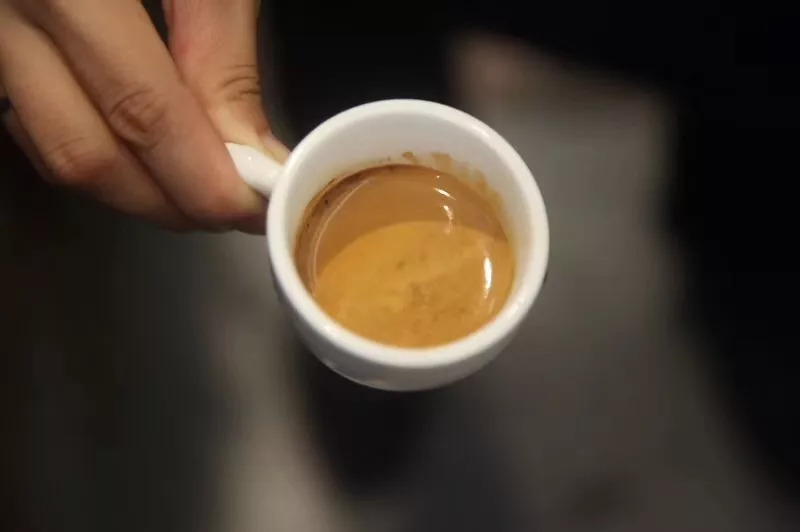
Important Notice :
前街咖啡 FrontStreet Coffee has moved to new addredd:
FrontStreet Coffee Address: 315,Donghua East Road,GuangZhou
Tel:020 38364473
- Prev

Indonesia PWN Gold Mantenin Coffee Bean Flavor and taste characteristics description of Mantenin hand Coffee parameters
Professional coffee knowledge exchange more coffee bean information please follow the coffee workshop (Wechat official account cafe_style) if you prefer mellow and full-bodied taste, [Manning] series of beans is also a good choice, [Golden Manning], [Tiger Manning] can choose, then why Manning chose deep
- Next
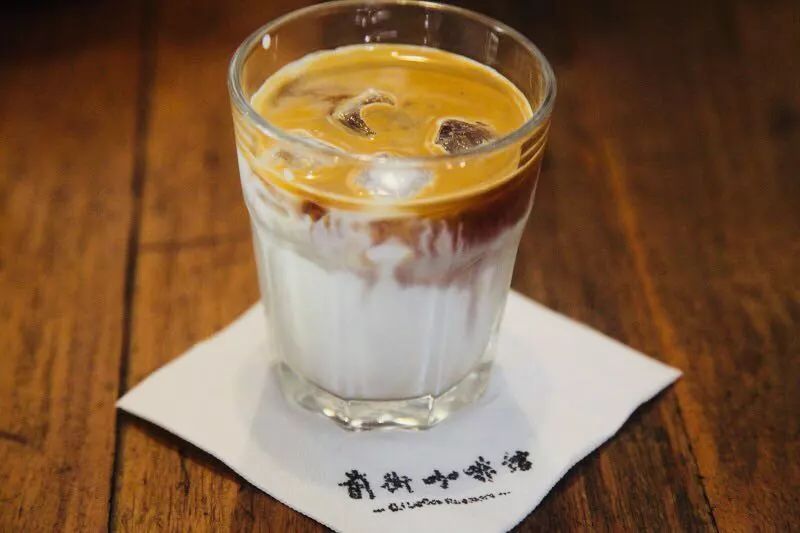
Illustration | A guide to making layered lattes needs to be signed.
There is a common sense that if you want to make a beautiful latte, you should pour the milk into the espresso, not the other way around. But what happens the other way around? This makes another kind of latte: layered latte (layere)
Related
- Beginners will see the "Coffee pull flower" guide!
- What is the difference between ice blog purified milk and ordinary milk coffee?
- Why is the Philippines the largest producer of crops in Liberia?
- For coffee extraction, should the fine powder be retained?
- How does extracted espresso fill pressed powder? How much strength does it take to press the powder?
- How to make jasmine cold extract coffee? Is the jasmine + latte good?
- Will this little toy really make the coffee taste better? How does Lily Drip affect coffee extraction?
- Will the action of slapping the filter cup also affect coffee extraction?
- What's the difference between powder-to-water ratio and powder-to-liquid ratio?
- What is the Ethiopian local species? What does it have to do with Heirloom native species?

